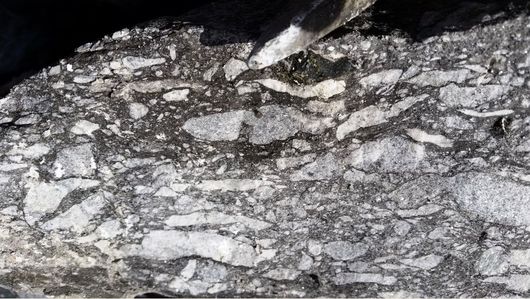Formation and destruction of graphitic material in fault zones: Implications for fault strength and the carbon cycle
Cao, Shuyun (Projektleitung)
Bernroider, Manfred (Projektmitarbeiter/in), Genser, Johann (Projektmitarbeiter/in), Neubauer, Franz (Projektmitarbeiter/in)

| P.I.: Researcher Researcher Researcher | Shuyun Cao Franz Neubauer Manfred Bernroider Johann Genser | |
Project description | The project intends to study the formation and destruction of graphitic material in fault rocks of exhumed fault zones. Because of the low strength, the presence of lubricating graphitic material along fault zones has important implications for understanding tectonic movements in various crustal levels. Fault zones are permeable for ascending and descending fluids and represent, therefore, effective pathways of fluids between deep lithospheric levels and Earth´s surface, and this plumbing system is part of the carbon exchange system of the global carbon cycle. Structure, microfabrics of graphitic material and the implications for the global carbon cycle in natural fault zones are still poorly understood. The project aims to fill these gaps. We propose to use graphitic material in fault zone to address key research questions, which are still enigmatic: (1) What are the important changes of structure, microfabrics and origin of graphitic material-bearing fault rocks at various crustal levels, from surface to the depth a wide range of temperature conditions? (2) What are the formation and destruction mechanisms of graphitic material along the fault zones, particularly for the upward motion of carbon towards the atmosphere? (3) How leads the interaction of carbon-bearing fluids with other, hydrous fluids to precipitation of graphitic material? (4) How the formation of graphitic material leads to weakening of a fault? (5) What is the contribution of carbon released from fault zones to the global carbon cycle? Our work will test these research questions in extrusion-related graphitic faults in the Eastern Alps such as the SEMP and Periadriatic faults and graphitic faults along subvertical limestone-to-evaporite contacts of the Eastern Alps. Based on field studies, the proposed work will include a range of techniques allowing characterize the origin of graphitic material along fault zones (e.g. organic vs. carbonatic vs. fluid origins) and its physical formation and destruction mechanisms. In some cases, the timing of formation of graphitic material could potentially constrained by dating of contemporaneously formed other minerals. The results will potentially permit us to meaningfully: (1) recognize faults with graphitic lubricants during faulting and, therefore, allow assess crustal strength over various temporal and spatial scales, (2) assess how carbon-bearing material is moving through the fault zone hence recording the complex structural history, and (3) how carbon represents a monitor of fluid transport through fault zones. The new data will allow assessment of carbon transfer between depth and surface aims to contribute to the knowledge of the global carbon cycle. The results will also have important implications for fault mechanics, engineering geology, nuclear waste repositories and assessment of seismic hazard. |




